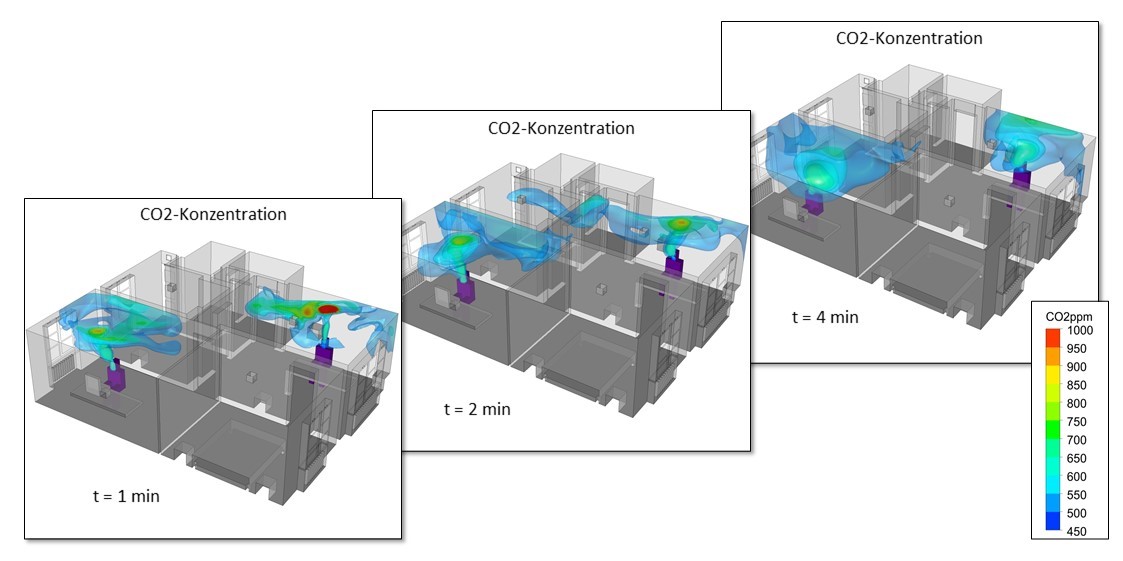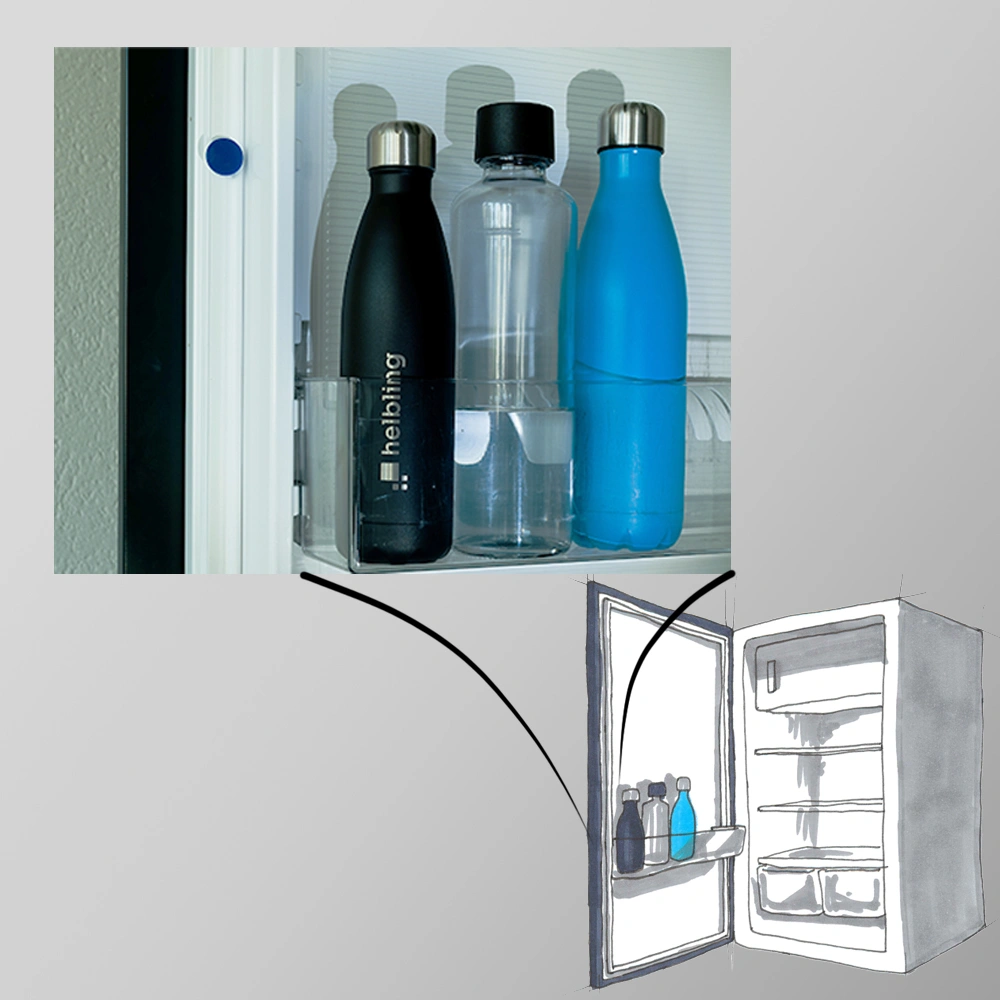Industries
September 2021
The number of work activities carried out in indoor spaces such as offices or halls is constantly increasing. At the same time, awareness of the impact of emissions on indoor air quality in the workplace is also growing. The COVID-19 pandemic has further raised awareness of the importance of an uncontaminated and, in some cases, even sterile working environment. The key to this is reliable ventilation systems. Helbling helps to design and dimension these optimally by means of complex fluid dynamics simulations, among other things.
Air quality is influenced by various sources
Well-designed ventilation systems for internal areas are indispensable in buildings today. This especially applies to buildings that have been constructed according to energy-efficiency standards in the interest of sustainability. Firstly, improved thermal insulation eliminates the need for natural window ventilation through gaps, as is the case in older buildings. Secondly, the room air is circulated more frequently, and less fresh air is supplied in order to save energy. Because of this air recycling, sources of foreign matter such as building materials, furnishings, and appliances can have a greater negative impact on indoor air quality.
Air contaminants are typically categorized into gaseous substances such as odors, or irritating substances and particles such as dust or viruses. People also contribute to the deterioration of indoor air quality through activities such as cooking and cleaning. However, our mere presence is enough: when we breath we release carbon dioxide, water vapor, and tiny liquid droplets known as aerosols into the ambient air, which are dispersed into the environment.

Aerosols as a means of transport
Aerosols emitted by humans can transmit diseases. This is particularly relevant if there are lots of people in a room and the air is not cleaned, exchanged or renewed. In the case of SARS-CoV-2, virus transmission predominantly occurs by droplet infection via aerosols. The decisive factor here is the time that the droplets spend in the air, which is strongly affected by their aerodynamic diameter. Large droplets sediment relatively quickly and fall to the ground within a short distance. In contrast, small to medium-sized aerosols measuring in the micrometer range can be transported around a room through the air for several hours without significant sedimentation occurring.

Accordingly, this also increases the risk of disease transmission between people who are in the same room and do not actively protect themselves. This danger can be counteracted by air exchange with the outside environment, since an active mixture of fresh air reduces the aerosol concentration in interior spaces.
Predicting air exchange by means of simulation
Helbling’s teams of experts have a great deal of experience in optimizing air exchange and also have the corresponding software tools for modeling and simulation. To do so, they make use of the properties of aerosols: Since they move in small droplets through exhaled air, the concentration of exhaled carbon dioxide can be analyzed. The distribution of this gas in interior spaces can also be easily measured using inexpensive sensors. This can be used as an indicator of indoor air quality, enabling assessment of the amount of air that needs to be exchanged. This is used at Helbling for accurate predictions – real measured values are used to validate the simulation model.
Ideally, this is already applied in the planning phase of buildings, meaning that a specified air quality can be achieved in the workplace right from the beginning. Using suitable flow simulations called CFD simulations (computational fluid dynamics), the spatial distribution of the CO2 concentration can be efficiently mapped for different occupancy scenarios. This allows early adaptation of floor plans that are already in the planning phase or helps to dimension active elements in ventilation systems.
Analysis considers the movement in space
Time-dependent processes are particularly important when defining ventilation scenarios. In this case, transient or time-dependent simulations can be performed. Transient simulations can map the breathing of any occupants in a space, any windows opened, and even employees moving through the premises, for example. Thus, typical movement scenarios for the workplace are already considered in the planning phase. The example shows the time-dependent dispersion of exhaled air in office rooms

Summary: Optimization of indoor air through simulation and measurement
Indoor air quality at workplaces is becoming increasingly important, not least due to the COVID‑19 pandemic. To optimize this, experts are making use of the transport properties of aerosols, which provide an efficient way of analyzing air quality using fluid dynamics simulations. Using suitable software tools such as Ansys or COMSOL makes it possible to design workplaces with optimum air quality. Helbling has the relevant expertise and will be happy to assist you with analysis. Helbling experts can support you in designing new and innovative systems for indoor air purification with the aid of new technologies such as UV photocatalysis or plasma cleaning, for example.
Authors: Reto Wäger / Christian Seiler





